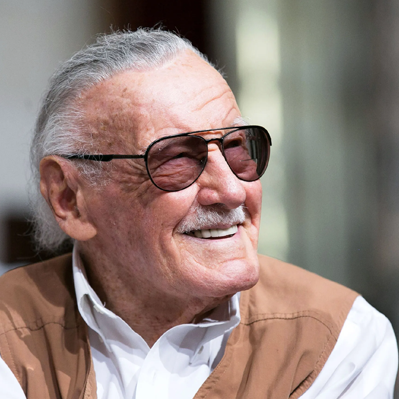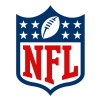- 1. Early life
- 2. Career
- 2.1. Early career
- 2.2. Marvel Comics

LIEBER
Stanley
Comic book writer
Date of Birth: 28 December 1922
Date death: 12 November 2018
Age at the time of death: 95 years old
Zodiac sign: Capricorn
Profession: Writer
Biography
Stanley Martin Lieber (Stan Lee) was an American comic book writer, editor, publisher, and producer. He rose through the ranks of a family-run business called Timely Publications which would later become Marvel Comics. He was the primary creative leader for two decades, leading its expansion from a small division of a publishing house to a multimedia corporation that dominated the comics and film industries.
In collaboration with others at Marvel—particularly co-writers/artists Jack Kirby and Steve Ditko—he co-created characters including superheroes Spider-Man, the X-Men, Iron Man, Thor, the Hulk, Ant-Man, the Wasp, the Fantastic Four, Black Panther, Daredevil, Doctor Strange, Scarlet Witch, and Black Widow. These and other characters' introductions in the 1960s pioneered a more naturalistic approach in superhero comics, and in the 1970s Lee challenged the restrictions of the Comics Code Authority, indirectly leading to changes in its policies. In the 1980s he pursued the development of Marvel properties in other media, with mixed results.
Following his retirement from Marvel in the 1990s, Lee remained a public figurehead for the company, and frequently made cameo appearances in films and television shows based on Marvel characters, on which he received an executive producer credit. He continued independent creative ventures into his 90s until his death in 2018. Lee was inducted into the comic book industry's Will Eisner Award Hall of Fame in 1994 and the Jack Kirby Hall of Fame in 1995. He received the NEA's National Medal of Arts in 2008.
Early life
Stanley Martin Lieber was born on December 28, 1922, in Manhattan, New York City, in the apartment of his Romanian-born Jewish immigrant parents, Celia (née Solomon) and Jack Lieber, at the corner of West 98th Street and West End Avenue. Lee was raised in a Jewish household, and in a 2002 interview, he stated when asked if he believed in God, "Well, let me put it this way... [Pauses.] No, I'm not going to try to be clever. I really don't know. I just don't know." On another interview from 2011, when asked about his Romanian origins and his relationship with the country, he said that he had never visited it and that he did not know Romanian because his parents never taught it to him. Lee's father, trained as a dress cutter, worked only sporadically after the Great Depression, and the family moved further uptown to Fort Washington Avenue, in Washington Heights, Manhattan. Lee had one younger brother named Larry Lieber. He said in 2006 that as a child he was influenced by books and movies, particularly those with Errol Flynn playing heroic roles. By the time Lee was in his teens, the family was living in an apartment at 1720 University Avenue in The Bronx. Lee described it as "a third-floor apartment facing out back". Lee and his brother shared the bedroom, while their parents slept on a foldout couch.
Lee attended DeWitt Clinton High School in the Bronx. In his youth, Lee enjoyed writing and entertained dreams of writing the "Great American Novel" one day. He said that in his youth he worked such part-time jobs as writing obituaries for a news service and press releases for the National Tuberculosis Center; delivering sandwiches for the Jack May pharmacy to offices in Rockefeller Center; working as an office boy for a trouser manufacturer; ushering at the Rivoli Theater on Broadway; and selling subscriptions to the New York Herald Tribune newspaper. At fifteen, Lee entered a high school essay competition sponsored by the New York Herald Tribune, called "The Biggest News of the Week Contest." Lee claimed to have won the prize for three straight weeks, goading the newspaper to write him and ask him to let someone else win. The paper suggested he look into writing professionally, which Lee claimed "probably changed my life." He graduated from high school early, aged sixteen and a half, in 1939 and joined the WPA Federal Theatre Project.
Career
Early career
With the help of his uncle Robbie Solomon, Lee became an assistant in 1939 at the new Timely Comics division belonging to pulp magazine and comic-book publisher Martin Goodman. Timely, by the 1960s, would evolve into Marvel Comics. Lee, whose cousin Jean was Goodman's wife, was formally hired by Timely editor Joe Simon.
His duties were prosaic at first. "In those days [the artists] dipped the pen in ink, I had to make sure the inkwells were filled", Lee recalled in 2009. "I went down and got them their lunch, I did proofreading, I erased the pencils from the finished pages for them".[54] Marshaling his childhood ambition to be a writer, young Stanley Lieber made his comic-book debut with the text filler "Captain America Foils the Traitor's Revenge" in Captain America Comics #3 (cover-dated May 1941), using the pseudonym Stan Lee (a play on his first name, "Stanley"), which years later he would adopt as his legal name. Lee later explained in his autobiography and numerous other sources that because of the low social status of comic books, he was so embarrassed that he used a pen name so nobody would associate his real name with comics when he wrote the Great American Novel one day] This initial story also introduced Captain America's trademark ricocheting shield-toss. It would be adapted into a sequential art story in 2014 by Lee and Bruce Timm in Marvel's 75th Anniversary Celebration.
Lee graduated from writing filler to actual comics with a backup feature, "'Headline' Hunter, Foreign Correspondent", two issues later, using the pseudonym "Reel Nats". His first superhero co-creation was the Destroyer, in Mystic Comics #6 (August 1941). Other characters he co-created during this period, called the Golden Age of Comic Books, include Jack Frost, debuting in U.S.A. Comics #1 (August 1941), and Father Time, debuting in Captain America Comics #6 (August 1941). 12–13
When Simon and his creative partner Jack Kirby left in late 1941 following a dispute with Goodman, the 30-year-old publisher installed Lee, just under 19 years old, as interim editor. The youngster showed a knack for the business that led him to remain as the comic-book division's editor-in-chief, as well as art director for much of that time, until 1972, when he would succeed Goodman as publisher.
Lee entered the United States Army in early 1942 and served within the US as a member of the Signal Corps, repairing telegraph poles and other communications equipment. He was later transferred to the Training Film Division, where he worked writing manuals, training films, slogans, and occasionally cartooning. His military classification, he said, was "playwright"; he added that only nine men in the U.S. Army were given that title. In the Army, Lee's division included many famous or soon-to-be famous people, including three-time Academy Award-winning director Frank Capra, New Yorker cartoonist Charles Addams, and children's book writer and illustrator Theodor Geisel, later known to the world as "Dr. Seuss." Vincent Fago, editor of Timely's "animation comics" section, which put out humor and talking animal comics, filled in until Lee returned from his World War II military service in 1945. Lee was inducted into the Signal Corps Regimental Association and was given honorary membership of the 2nd Battalion of 3rd U.S. Infantry Regiment out of Joint Base Lewis-McChord at the 2017 Emerald City Comic Con for his prior service.
While in the Army, Lee received letters every week on Friday from the editors at Timely, detailing what they needed written and by when. Lee would write stories, then send them back on Monday. One week, the mail clerk overlooked his letter, explaining that nothing was in Lee's mailbox. The next day, however, Lee went by the closed mailroom and saw an envelope with the return address of Timely Comics in his mailbox. Not willing to miss a deadline, Lee asked the officer in charge to open the mailroom, but the latter refused. So Lee took a screwdriver and unscrewed the mailbox hinges, retrieving the envelope containing his assignment. The mailroom officer saw what he did and turned him into the base captain, who did not like Lee. He faced tampering charges and could have been sent to Leavenworth Prison. However, the colonel in charge of the Finance Department intervened and saved Lee from disciplinary action.
In the mid-1950s, by which time the company was now generally known as Atlas Comics, Lee wrote stories in a variety of genres including romance, Westerns, humor, science fiction, medieval adventure, horror and suspense. In the 1950s, Lee teamed up with his comic book colleague Dan DeCarlo to produce the syndicated newspaper strip My Friend Irma, based on the radio comedy starring Marie Wilson. By the end of the decade, Lee had become dissatisfied with his career and considered quitting the field.
Marvel Comics
In the late 1950s, DC Comics editor Julius Schwartz revived the superhero archetype and experienced significant success with an updated version of the Flash, and later with the Justice League of America super-team. In response, publisher Martin Goodman assigned Lee to come up with a new superhero team. Lee's wife suggested that he experiment with stories he preferred, since he was planning on changing careers and had nothing to lose.
Lee acted on the advice, giving his superheroes a flawed humanity, a change from the ideal archetypes typically written for preteens. Before this, most superheroes had been idealistically perfect people with no serious, lasting problems. Lee introduced complex, naturalistic characters who could have bad tempers, fits of melancholy, and vanity; they bickered amongst themselves, worried about paying their bills and impressing girlfriends, got bored or sometimes even physically ill.
The first superheroes Lee and artist Jack Kirby created together were the Fantastic Four. The team's immediate popularity led Lee and Marvel's illustrators to produce a cavalcade of new titles. Again working with Kirby, Lee co-created the Hulk, Thor, Iron Man, and the X-Men; with Bill Everett, Daredevil; and with Steve Ditko, Doctor Strange and Marvel's most successful character, Spider-Man, all of whom lived in a thoroughly shared universe. Lee and Kirby gathered several of their newly created characters together into the team title The Avengers and would revive characters from the 1940s such as the Sub-Mariner and Captain America. Years later, Kirby and Lee would contest who deserved credit for creating The Fantastic Four.
Lee's revolution extended beyond the characters and storylines to the way in which comic books engaged the readership and built a sense of community between fans and creators. He introduced the practice of regularly including a credit panel on the splash page of each story, naming not just the writer and penciller but also the inker and letterer. Regular news about Marvel staff members and upcoming storylines was presented on the Bullpen Bulletins page, which (like the letter columns that appeared in each title) was written in a friendly, chatty style. Lee remarked that his goal was for fans to think of the comics creators as friends, and considered it a mark of his success on this front that, at a time when letters to other comics publishers were typically addressed "Dear Editor", letters to Marvel addressed the creators by first name (e.g., "Dear Stan and Jack"). Lee recorded messages to the newly formed Merry Marvel Marching Society fan club in 1965.[90] By 1967, the brand was well-enough ensconced in popular culture that a March 3 WBAI radio program with Lee and Kirby as guests was titled "Will Success Spoil Spiderman sic".
Throughout the 1960s, Lee scripted, art-directed and edited most of Marvel's series, moderated the letters pages, wrote a monthly column called "Stan's Soapbox", and wrote endless promotional copy, often signing off with his trademark motto, "Excelsior!" (which is also the New York state motto). To maintain his workload and meet deadlines, he used a system that was used previously by various comic-book studios, but due to Lee's success with it, became known as the "Marvel Method". Typically, Lee would brainstorm a story with the artist and then prepare a brief synopsis rather than a full script. Based on the synopsis, the artist would fill the allotted number of pages by determining and drawing the panel-to-panel storytelling. After the artist turned in penciled pages, Lee would write the word balloons and captions, and then oversee the lettering and coloring. In effect, the artists were co-plotters, whose collaborative first drafts Lee built upon.
Following Ditko's departure from Marvel in 1966, John Romita Sr. became Lee's collaborator on The Amazing Spider-Man. Within a year, it overtook Fantastic Four to become the company's top seller. Lee and Romita's stories focused as much on the social and college lives of the characters as they did on Spider-Man's adventures. The stories became more topical, addressing issues such as the Vietnam War, political elections, and student activism. Robbie Robertson, introduced in The Amazing Spider-Man #51 (August 1967) was one of the first African-American characters in comics to play a serious supporting role. In the Fantastic Four series, the lengthy run by Lee and Kirby produced many acclaimed storylines as well as characters that have become central to Marvel, including the Inhumans and the Black Panther, an African king who would be mainstream comics' first black superhero.
The story frequently cited as Lee and Kirby's finest achievement is the three-part "Galactus Trilogy" that began in Fantastic Four #48 (March 1966), chronicling the arrival of Galactus, a cosmic giant who wanted to devour the planet, and his herald, the Silver Surfer. Fantastic Four #48 was chosen as #24 in the 100 Greatest Marvels of All Time poll of Marvel's readers in 2001. Editor Robert Greenberger wrote in his introduction to the story that "As the fourth year of the Fantastic Four came to a close, Stan Lee and Jack Kirby seemed to be only warming up. In retrospect, it was perhaps the most fertile period of any monthly title during the Marvel Age." Comics historian Les Daniels noted that "the mystical and metaphysical elements that took over the saga were perfectly suited to the tastes of young readers in the 1960s", and Lee soon discovered that the story was a favorite on college campuses. Lee and artist John Buscema launched The Silver Surfer series in August 1968.
The following year, Lee and Gene Colan created the Falcon, comics' first African-American superhero, in Captain America #117 (September 1969). In 1971, Lee indirectly helped reform the Comics Code. The U. S. Department of Health, Education and Welfare had asked Lee to write a comic-book story about the dangers of drugs and Lee conceived a three-issue subplot in The Amazing Spider-Man #96–98 (cover-dated May–July 1971), in which Peter Parker's best friend becomes addicted to prescription drugs. The Comics Code Authority refused to grant its seal because the stories depicted drug use; the anti-drug context was considered irrelevant. With Goodman's cooperation and confident that the original government request would give him credibility, Lee had the story published without the seal. The comics sold well and Marvel won praise for its socially conscious efforts. The CCA subsequently loosened the Code to permit negative depictions of drugs, among other new freedoms.
Lee also supported using comic books to provide some measure of social commentary about the real world, often dealing with racism and bigotry. "Stan's Soapbox", besides promoting an upcoming comic book project, also addressed issues of discrimination, intolerance, or prejudice.
In 1972, Lee stopped writing monthly comic books to assume the role of publisher. His final issue of The Amazing Spider-Man was #110 (July 1972) and his last Fantastic Four was #125 (August 1972).
Lee became a figurehead and public face for Marvel Comics. He made appearances at comic book conventions around America, lecturing at colleges and participating in panel discussions. Lee and John Romita Sr. launched the Spider-Man newspaper comic strip on January 3, 1977. Lee's final collaboration with Jack Kirby, The Silver Surfer: The Ultimate Cosmic Experience, was published in 1978 as part of the Marvel Fireside Books series and is considered to be Marvel's first graphic novel. Lee and John Buscema produced the first issue of The Savage She-Hulk (February 1980), which introduced the female cousin of the Hulk, and crafted a Silver Surfer story for Epic Illustrated #1 (Spring 1980).
He moved to California in 1981 to develop Marvel's TV and movie properties. He was an executive producer for, and made cameo appearances in Marvel film adaptations and other movies. He occasionally returned to comic book writing with various Silver Surfer projects including a 1982 one-shot drawn by John Byrne, the Judgment Day graphic novel illustrated by John Buscema, the Parable limited series drawn by French artist Mœbius, and The Enslavers graphic novel with Keith Pollard. Lee was briefly president of the entire company, but soon stepped down to become publisher instead, finding that being president was too much about numbers and finance and not enough about the creative process he enjoyed.
Born in one day
Horoscope Capricorn: horoscope for today, horoscope for tomorrow, horoscope for week, horoscope for month, horoscope for year.

 4
4











































